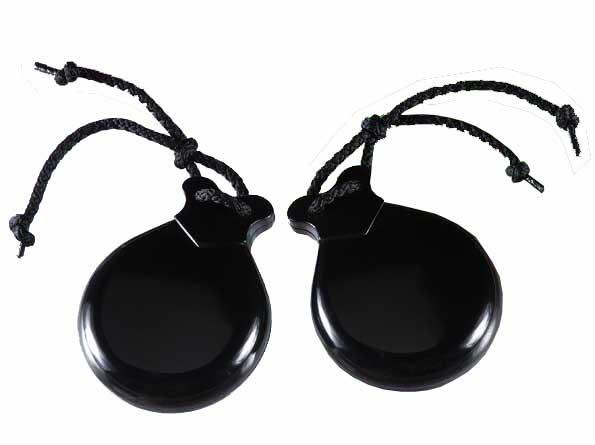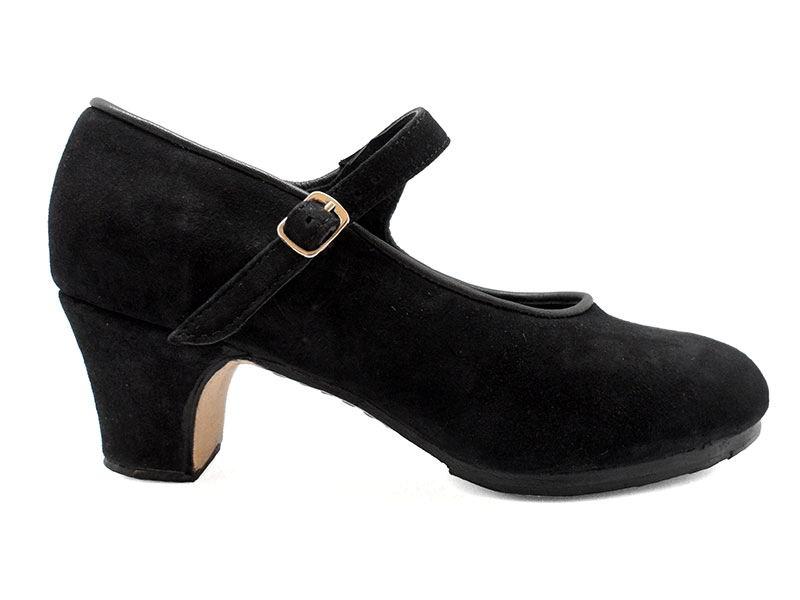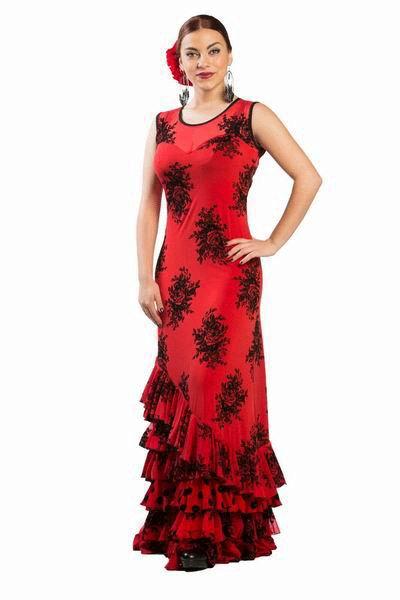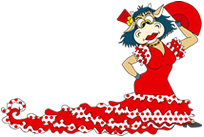Published in
abanicosCategories
- abanicos (10)
- accesorios (4)
- accesorios (5)
- actividades (2)
- artesanal (2)
- Awards (4)
- Bailaores (37)
- baile (4)
- Barcelona (2)
- Cajón Flamenco (2)
- castañuelas (8)
- Classes (3)
- cómo tocar (1)
- complementos (2)
- Consejos (5)
- Dance (40)
- danza (1)
- Discs lauching (2)
- escotes (1)
- Eventos (4)
- Faldas (5)
- faldas (3)
- Feria de Abril (1)
- Feria de Abril (1)
- Feria de Abril (1)
- Feria de Abril (1)
- Feria de Abril (3)
- Feria de Córdoba (1)
- Ferias (3)
- Festival de Jerez (2)
- Festival de Jerez 2010 (22)
- Festival Flamenco Caja Madrid (4)
- festivales (1)
- Festivals (50)
- FIBES (4)
- Fiesta (1)
- fiesta (2)
- flamenco (3)
- flamenco flowers (5)
- Flamencos (58)
- flecos (1)
- Formación (3)
- Guitar (20)
- guitarra flamenca (1)
- historia (1)
- ideas (1)
- Instrumentos (1)
- Japan (3)
- Javier Limon (1)
- Jerez (6)
- La Bienal de Flamenco (6)
- Legends (14)
- lenguaje del abanico (1)
- lunares (1)
- Madrid (23)
- Mantilla (1)
- Manton de manila (1)
- mantones (3)
- método (1)
- Moda Flamenca (6)
- Movies (4)
- Music (54)
- News (142)
- Palos (4)
- peinetas (2)
- Pendientes (4)
- Percusión (1)
- Productos (8)
- Review (10)
- Rocío de Huelva (2)
- Romería (1)
- Seville (24)
- Shows (83)
- Simof 2010 (12)
- Simof 2011 (2)
- Simof 2012 (1)
- Simof 2013 (1)
- Singing (64)
- Suma Flamenca (5)
- Tablaos (4)
- tendencias moda (1)
- tipología (1)
- tocaores (1)
- tradición (1)
- trajes de campero (3)
- trajes de flamenca (2)
- trajes de flamenca (3)
- trajes de flamenca (1)
- Trajes de flamenca (1)
- trajes de flamenca (1)
- trajes de flamenca (1)
- trajes de flamenca (1)
- Trajes de flamenca (1)
- vestidos flamencos (1)
- Video (9)
- volantes (1)
- zapatos flamenco (7)
- zapatos flamenco (7)
-
-
No reviews
Published in
abanicos -
No reviews
Published in
abanicosLos abanicos o pericones usados en el flamenco pueden acompañarse de toda clase de dibujos para darles un aspecto diferente que los convierte en innovadores a todos los demás.
Vamos a comentar algunos de los dibujos de flamencos más originales de Flamencoexport.
Para bailar flamenco
Entre esta gama hemos seleccionado este diseño por la adición del textil de encaje y dos colores tan usado en el flamenco como el rojo y el negro.
El encaje en color negro aporta elegancia, acompañada de la pasión que otorga el rojo. En este caso apostamos por ambas tonalidades pero se puede adquirir en muchas más.

-
No reviews
Published in
abanicos -
No reviews
Published in
abanicos -
2 Reviews
Published in
abanicos -
5
JUL
No reviews
With the arrival of summer come the vacations and the free time. What better idea than to take advantage of it by participating in all sorts of activities with some flamenco flair. Here are some of the things that you can spend your summer doing:
Intensive courses and flamenco lessons:
This is the most obvious one but it is also the easiest due to the fact that almost any academy or studio offers, during the summer break, a wide variety of classes and courses. In fact, if you look closer you can find some imparted by some of the most recognized and prestigious choreographers and dancers with whom you will be able to learn about professional flamenco dancing and improve your technique while expanding your knowledge. Even if you are a begginer or flamenco dance is something you always wanted to do but never found the time to do it, now is the moment for it. Sign yourself up and try some classes while having a great time meeting new people. This classes are also for kids and adults of different levels you have no excuse. And if you need any skirts, dance shoes or any other accesory you can find a great selection in our web that will meet your requirements.
Some examples of courses:
-
Intensive courses: The intensive classes are a good way to enjoy your free time learning from some of the best flamenco artists. There is a big variety of courses focused in learning how to dance bulerías, spanish dance, how to play flamenco box or guitar, etc.
- Flamenco dance classes 2017: The Flamenco Studio from Sevilla is one of those who offer summer classes for all levels.

In our web you will find flamenco dresses and accesories for your classes
Flamenco camps:
Related to what was said before, there are summer camps that offer training in different techniques and flamenco styles. Kids and adults of all levels can learn and improve while chatting, playing games, and doing all sort of fun activities with other people. What better way to spend the summer than dancing.
-
Flamenco Workshop Miraflores 2017 in Madrid: You could go to classes with some of the best professionals and the camp includes other activities like flamenco movies nights, visits to Miraflores and Madrid, hiking, horseriding, routes, climbing and spanish classes for foreigners.
-
II International Flamenco Camp: Organized by the Andalucía Flamenco School in Iruela (Jaén), this camp offers as well side activities like tastings, visits, parades and awards ceremony, and, of course, an exhibition show created by teachers and students of the camp.
-
Flamenco Camp Malaga 2017: This one in particular is going to take place in Malaga and offers a complete inmersive experience of the flamenco world.

Camps like the one in Miraflores are a good way to learn and have fun
Festivals:
If you are one of those that likes flamenco dance but prefers to watch it, then festivals and concerts are maybe your thing. Here are some of the most interesting ideas for this summer if you are planning to go to at least one:
-
Summer festivals and concerts agenda: Here are a wide variety of events you can go to in different parts of Spain and other countries like France.
-
'Nights in the plaza' and 'Flamenco on the swimming pool': Son villages like Villarasa in Huelva have organized during summer break different activities and outdoor concerts in public places for everyone to enjoy.
-
Flamenco On Fire festival: This festival, which already is in its fourth edition, has become one of the most key events of the calendar for flamenco lovers. From the 22nd to the 27th of August, the northern city of Pamplona welcomes one more year an event that will receive a big number of incredible artists. This year people like Cañizares, Martirio, Pedro 'El Granaíno', Miguel Ángel Cortés, Carmen Linares, Arcángel, Jon Losada y Antonio Losada, Tomasito, Antonio Carmona o Miguel Poveda will be performing in the main auditorium of Baluarte, which will host five big shows, as well as Sala Zentral, that will include a big concert, and the Tres Reyes Hotel that will have a tablao in which the 'Night Cicle' will have place with six first class acts.

Flamenco On Fire festival has become a key event.
Flamenco parties:The summer always is a perfect time for parties with friends and family, to enjoy dancing, eating, drinking and having fun. Here are some ideas if you want to host a thematic flamenco party yourself:
-
Remember to decorate the place in which you are going to celebrate the party so it has a flamenco touch. You can use flowers, lanterns, posters or even big personalized fans for the walls. You decide how to put it, just remember in flamenco parties everything is not enough.
-
Wear a flamenca suit or any flamenca accesory and ask your guests to bring also dresses, skirts o accesories that go with the party to make it more fun.
-
Also, do not forget the music. There is a wide variety of flamenco singers that your guests will enjoy but mix it with modern singers too so the young ones feel also included.
-
With these high temperatures we should remember to use our fans too. It is a really important accesory to have in order to survive the heat, and besides, it also is very versatile since you can use it for decorating walls, tables or even as a party favor for your guests. You can personalized them to make it more fun or everyone can use the same if you are celebrating a bachelorette party.
-
Last but not least, remember to prepare typical flamenco dishes to give the party a bigger flamenco flair. For example, you can cook andalusian gazpacho, very nutritious, fresh an easy to make and pair it with a stew, don't forget the seafood and the fried fish. And top it with a drink like rebujito, a classic summer and fresh beverage very common in Andalucía. Your guests will love it.

The flamenco dresses and skirts are essential for a folkloric flair for your party. -
-
6
JUN
1 Reviews
Summer is here and with it comes the end of year for most dance schools. As always is time to prepare everything so everything comes out perfectly. In Flamencoexport we have a wide variety of products that could be useful if you are a student in the show that each year every dance academy or school prepares in this time of the year. Also, if you are a teacher and you are looking for clothes and accesories for your choreography to be spectacular, in our web you will find what you are searching for. Here we will show you a list of some of the most useful and comfortable products, perfect for ocassions like this:
- Fans

We have a large selection of fans of all kinds and sizes, for adults and kids, that will make your choreography more spectacular and colourful. You can find them with all sorts of styles, elegants, with pollka dots and prints, in diferent colours, and, if you want to be original you can buy our special DIY fans.
- Castanets

Another essential accesory to complement the dances are the castanets. They have a vibrant sound and in our web you can find them in different materials, specially made for all sorts of learning levels, sizes and several prices. Take advantage of them and make a party out of your dance using this beautiful and harmonious musical instrument.Flamenco skirts

Skirts are one of the most important elements of a flamenco dance. In our web you can find them in all sorts of colours, sizes, for kids and adults, etc. We have a wide selection, all of them artisanal and made with the highest quality materials. Besides, they can be custom made if needed.
Flamenco shoes

Every person that is involved in flamenco needs good shoes, the most important part of any dance. We offer a great variety of them for women and men, made in several materials, with or without nails, specifically made for the different learning levels of the students, and most important, comfortable and practical. In our page we sell all sorts of shoes from highly recognized and qualified brands, who make this footwear with the highest quality standards. And, of course, we also provide replacement nails to change them when needed.- Flamenco dance suits

For those who are looking for the full outfit, in Flamencoexport we have also all sorts of flamenco dance suits, beautiful, economic, useful and perfect for any end of the year show. If you want your students to dress like professionals, this can be a really good option.- Accesories

To complete the look, the accesories are an important part of it all. They bring colour, brightness and makes the dancers to stand out, be part of a group but at the same time show their own personality. -
A fan is an instrument and a fashion accesory created so that with a rythmic wrist movement it can be easily moved and it can help to cool down the environment. Its origins are believed to be in the East, and its creation is delicate, special when it is made with artistic designs and quality materials. In China it is a millenary tradition, in fact, it goes back to the emperor Hsien Yuan times, around the year 2697 B.C. However, the fans were also used by egipcians, babilonians, persians, greeks and romans. The egipcian fans used to be large, fixed, with a semircircular shape, feathers and long handles. Its function used to be double: to give air and to shoo away the insects. Over time the fans became decorative and an indicative of the power someone had. On the other hand, the romans called it flabelo, and the ones used to scare the insects were called muscaria.

In the East, during the Middle Age, the fan became part of the christian liturgy and was used for the consecration, to protect the Eucharist from the insects and refresh the assistants. After the XIV century it fell into disuse in the roman church, but it was preserved in the greek and armenian churches, where it receives the name of rhipidion. The fan was also known by incas and aztecs, since between the gifts Moctezuma gave to Hernán Cortés there were six feather fans. And nowadays they still made them in different places all over the world, like in Spain, where the fan has become the most characteristic element of our culture and, of course, of the flamenco dance.
Morphology and types of fans
The fans are divided in two parts, the body wich is the area that moves the air and is composed by the linkage and the fabric, and the handle, that allows to manage the instrument with ease.
Fixed fansThis kinds are flat and generally hold by a handle in different sizes. Some of then are symmetric, and have a rounded layer fixed to one end. Other have a cardboard rectangular layer, fixed on one side to a rod that works as a handle. They are made in several materials like carboard, palm tree leafs, fabric or feathers.
Foldable fansSemircicular fans made with various equal plain rods of wood, ivory or synthetic material, attached at the base with a small nail. The rods are put together on the other side with a wide, normally decorated, piece of fabric or paper. The fan opens in a semicircular shape. This are composed of:
-
Baraja: foldable skeleton of the fan.
-
País (Body): fabric adhered to the skeleton. The fans that don't have this part are denominated just baraja.
-
Varillas (Rods): drawn or painted wooden strips. There are two sections: the decorated part is called fuente (fountain), and the guide to the exterior part of the rods that covers the fabric.
-
Cabera, pala o varillas maestras (master rods): first and last rod, wider than the rest. In the luxury fans they can end up being authentic artworks of micro-scupltures. jewellery and engravings. Often, this exclusive models have in their heads the initials of the owner.
- Calado: holes made over the rods that help to decorate them and to increase its aerodynamics.

The manufacture of a fan
The manufacture of the fan requires the collaboration of several artistic categories: a painter to decorate and illustrate the body; an sculptor (ivory, bone, shell, nacre) or engraver (woods) to drill the rods; and in the most luxurious models a goldsmith (metals). With them also work different artisans that are in charge of manage the precise cut of the rods and the folding and pasting of the fabrics. The independence of each job makes it possible to create every part in different specialized workshops. The stages of the manufacturing process of a fan tends to be like this:
-
Cut of the rods, in parcels and with a template.
-
Polished, sanding and sharpening of the rods (one of the most delicate processes consist in sharpening the guide of the rods in the fabric area so it doesn't get bulky).
-
Draft of the rods with awls, using embossing and carving techniques.
-
If sculptors, graving artists and goldsmisths do a great job with the rods, the same happens with painters and its drawings, polychromy and golden of the body of the fan.
-
The manufacturing process its almost done when, grouped in packs of thirteen, sixteen or twenty four, and closed on the sides with two pleats, the whole thing is drilled on the bottom side, making a nail go through a hole and afterwards is riveted with two rosettes.
-
The body, whether it is made of paper, fabric, vellum or lace, is mounted on this skeleton. This materials can cover, on both sides, the rods or, in the case of the lace fans, just one of them. The fans without body, whose rods are attached together with zig-zag folded tape, recive the name of baraja. On this kind, the ivory ones of master artisans like the french Martain or the oriental types with silver decoration, have had a long tradition. The mechanization of the workshops has helped the production of the ivory fans, which before was a really delicate task. Not so the nacre ones, whose decoration has to be totally handmade since it doesn't admit a mechanic process.
It is known that before the folding fan showed up, some where already elaborated with lace and feathers. And in terms of the traditional folding type, it has suffered a long evolution and there has been diverse styles. In the XVI and XVII centuries, the wooden or ivory fan, with body made of fabric or embroidered kid, used to be of short flight. In the XVIII century the fan stop being an exclusive accesory of the upper class, and the wooden kind with short flight and reduced fabric became really popular. In the first half of the XIX century, the small ones from the empire era were really trendy. With the Romanticism they became bigger with a golden, decorating filigree, that was original from the pericón (big fans). In both eras it got imposed the novelty of the printed paper with engraving. On a parallel note, at the end of that century it was really frequent to use painted gauze and lace in the creation of big fans.

Spanish fans
The first master fan artisans known in Spain are from the XVII century: Juan Sánchez Cabezas, Juan García de la Rosa, Francisco Álvarez de Borja o Jerónimo García. Others that worked with them were painters like Duarte de Pinto y Juan Cano de Arévalo. The technical defaults of the spanish fans provoked that the production was exceeded at the end of the XVII century by french and italian manufacturers. The supremacy lost was not reestablished until the last quarter of the XVIII century, when Carlos II's government decided to subsidize this industry, bring a good master in this task from Italy and limit the entry to Spain of foreign fans. Under the protection of Floridablanca count, Eugenio Prost, french artisan, settled himself in Spain. He, with the help of his wife, put the spanish quality of the fans high enough to match the rest. Almost at the end of the XVIII century the fan masters artisans guild became official with the foundation of the Valencia Real Factory of Fans. Over time, slowly but surely, the fan became part of our culture. Used initially on the hottest days of the year to refresh the environment, became one of the most important parts of our tradition, specially in the flamenco field.
IMPORTANTE
In Flamencoexport we have a selection of artisanal fans, made by experts, decorated with a big variety of designs, and customizables. If you are interested in finding the perfect fan for you, visit our website and look at our main products. -
-
No reviews
















1 Reviews